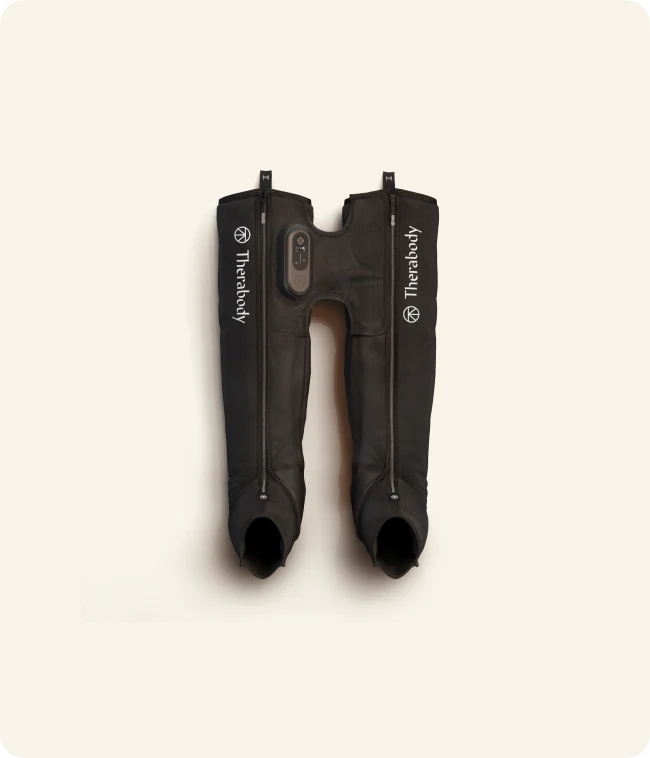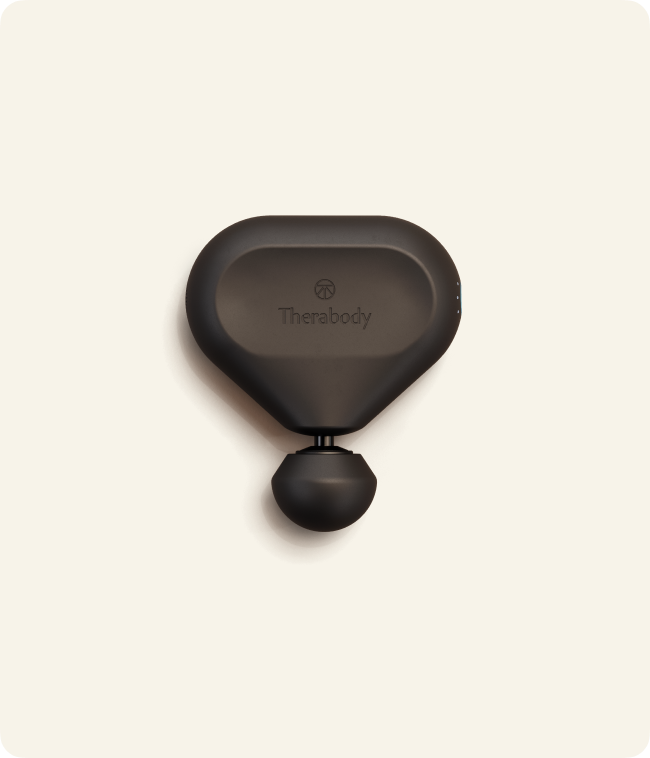
7 Dermatologist-Approved Tips for Skin Longevity
Authors: Therabody Scientists: Michelle Darian, MS, MPH, RD, LDN; Tim Roberts, MSc; Rachelle Reed, PhD, MS, ACSM-EP
Expert contributor: Dr. Neera Nathan, MD, MSHS, Harvard-trained medical and cosmetic dermatologist and fellowship-trained Mohs micrographic surgeon
Smart skincare isn't just about addressing concerns as they arise — it's about staying ahead of them. Your skin naturally changes over time, developing fine lines and wrinkles and losing some firmness and hydration.
Collagen is a connective tissue that holds your skin together, contributing plumpness. Its levels start declining in your 20s. [1] This rate picks up even more for women as they enter menopause. The significant drop in estrogen is accompanied by a 30% drop in collagen over a nearly 5-year period. [2]
The good news? You can help protect your skin's longevity. Avid photoprotection and a good skin care routine are the keys to maintaining healthy-looking skin for years to come.
The key is knowing which strategies actually work. With so much conflicting information on social media, generic solutions that fall short, and expensive treatments that aren't always accessible, it can be challenging to know what's right for you.
To help uncover what treatments are actually effective for aging skin, we turned to Neera Nathan, M.D., MSHS, Harvard-trained medical and cosmetic dermatologist and member of Therabody's Scientific Advisory Board, for her top at-home solutions that can help you maintain radiant, healthy-looking skin, no matter what decade you're in.
1. Wear sunscreen daily
There is nothing better you can do for your skin health for both preventing cancer and preventing the signs of aging than wearing sunscreen,” says Dr. Nathan.
That’s because the sun’s ultraviolet rays lead to collagen damage and breakdown. Plus, these rays trigger melanin (pigment) production, contributing to dark spots or sunspots. [3]
Overall, this process is known as photoaging — the premature aging of skin due to ultraviolet light (UVA and UVB light to be exact). This damage leads to wrinkles, rough skin texture, hyperpigmentation, and even conditions like skin cancer. [4]
Sunscreen protects against photoaging by blocking UVA and UVB light. It’s important to wear sunscreen every day, and it’s especially important when the UV index is high (at 3 and above). [5]
“I think the most important thing you can do, if you are someone who has hyperpigmentation or dark spots, is to wear sunscreen every single day. Tinted sunscreens containing iron oxides may provide additional benefits. In addition to your sunscreen and UV filters, iron oxides specifically can protect from visible light which can worsen dark spots,” Nathan emphasizes. [5]
So, after your morning skincare routine, don’t forget to slather on sunscreen (and throw it in your bag to apply every two hours throughout the day).

2. Use a good moisturizer
Don’t underestimate the power of a good moisturizer. These creams, liquids, or gels play a critical role in supporting aging skin as they protect the skin barrier and help prevent water loss.
Over time, the skin’s ability to retain moisture declines as levels of key hydrating compounds (like ceramides, fatty acids, and hyaluronic acid) gradually decrease. [6]
Nathan emphasizes that dry skin appears to show signs of aging faster. This loss of hydration can make fine lines look deeper, skin feel rougher, and the complexion appear dull.
A well-formulated moisturizer helps counter this by replenishing these liquids, pulling water back into the skin using its ingredients like glycerin or hyaluronic acid, and creating a protective seal to reduce water loss. [7]
While moisturizer offers an immediate boost in suppleness and glow, consistent use in the morning and at night also helps aging skin stay more resilient and youthful looking in the long run.
3. Use a Vitamin C serum
Vitamin C supports collagen production and is an antioxidant, so it helps protect against environmental stressors. This vitamin supports your body’s natural collagen production by helping fibroblasts build new fibers and protects existing collagen from damage caused by UV rays and pollution. [8, 9]
Plus, “Vitamin C has some modest brightening qualities,” says Nathan. Studies show that vitamin C’s antioxidant capabilities can help diminish hyperpigmentation and even skin tone when used topically. [10, 11]
Nathan does add that Vitamin C serums are primarily for prevention rather than treatment, which is why consistent use of the serum is important.
4. Try a retinoid
Retinoids are vitamin A derivatives that are applied topically to speed up cell turnover. This helps smooth fine lines and wrinkles, improving overall skin texture.
Retinoids also stimulate fibroblasts to produce more collagen and elastin, and they can help regulate oil production and unclog pores. [12]
“The science supporting topical retinoids is really strong,” says Nathan. “They're not for everybody, but retinoids probably have some of the best data outside of sun protection to slow signs of aging and actually reverse signs of aging.”
Talk to your dermatologist to see if over-the-counter retinols or prescription-strength retinoids (like tretinoin, adapalene, and tazarotene) could be helpful for you. Always avoid retinoids if you are pregnant or planning on becoming pregnant.

5. Use LED light
By now, you’ve probably seen (or tried) an LED light device in the form of a mask that you place on your face or a handheld device that you move across the skin.
LED light therapy is the intentional exposure of skin to specific wavelengths of light. Each wavelength reaches and targets different depths of the skin, depending on how long they are. Delivery of the right wavelengths for the right amount of time is an effective method to promote skin health.
“Red and infrared LED light in general have been shown to improve skin wrinkles and texture and improve skin elasticity and firmness,” says Nathan.
Red light is a long wavelength of visible light that can penetrate the skin. This light targets collagen synthesis by stimulating fibroblasts to promote collagen production. Treatment with this light emits a red glow. [13] Nathan also notes that red light can help reduce discoloration.
Red light therapy is often paired with infrared light therapy. Infrared light has an even longer wavelength than red light, which allows it to reach deeper layers of the skin. While it’s invisible to the eye, you can often feel its effects as a gentle warming sensation. This heat boosts blood flow to the area, supporting circulation and tissue repair at the cellular level. [13]
Blue light therapy is most beneficial for targeting acne. Blue light has a shorter wavelength to reach cells at the surface of the skin. It’s most beneficial for calming acne-prone skin and preventing acne-forming bacteria from thriving on the skin. Avoid blue light if you are prone to hyperpigmentation or melasma. [14]
"By combining red and infrared light, you're getting to different layers of the skin to maximize benefits. LEDs won't replace in office treatments, but they’re a great addition to your healthy aging skincare routine at home or between visits to your dermatologist. I’m all about accessibility,” says Nathan.
When you're looking for an at-home LED mask, make sure it meets these five criteria:
- The LED light wavelengths support your skin goals
- It consistently delivers full-face coverage
- The device provides a therapeutic dosage without becoming unsafe
- Treatment times are efficient
- It’s easy to use as a part of your daily routine
Therabody’s TheraFace® Mask Glo checks all of these boxes. This LED mask delivers a 12-minute sequence of red, red and infrared, and blue light therapy, and its technology has been clinically proven to promote a healthier-looking complexion.
Pro tip: Choosing clinically proven devices gives you confidence that advertised benefits are supported by science to deliver real results to you.
So, when can you expect to see results from this therapy? According to Nathan, “The more consistently you use it, the more benefits you’ll see. Time is important. I think it is reasonable to expect results probably starting at around one month, and you should see peak or best results in a couple of months.”
This consistency leads to effects that are longer-lasting than other treatments, like getting regular facials, because LED light can reach well below the skin.

6. Use vibration
Vibration is another therapy that at-home devices provide. And it supports the skin in multiple ways.
“Vibration can improve blood circulation, which has skin benefits,” says Nathan.
The best way to apply vibration therapy to the face is with the help of a device like TheraFace Mask. The three vibration patterns and intensities (relax, refresh, and revive) are designed to be effective and soothing, with vibration patterns delivered to your forehead and temples. If you’re looking for targeted support on specific areas of your face, reach for the handheld TheraFace PRO, which allows you to customize your treatment.

7. Support from the inside out
By now, you know that skin aging occurs at the cellular level. And other habits that impact cellular health, including lifestyle habits that have nothing to do with applying a treatment to your skin, can have a major impact.
“A healthy balanced diet, sleep, and overall health are critical for healthy skin and hair,” says Nathan.
- Prioritize sleeping well: “Poor sleep habits may lead to decreased elastin and collagen, increased trans epidermal water loss, and reduced skin barrier function over time,” says Nathan. [15]
- Strength train: “An interesting study showed that resistance training can actually increase all these collagen expression markers. So, going to the gym and lifting weights can do something for your skin,” says Nathan. The U.S. Physical Activity Guidelines For Americans recommends that adults engage in strength training (activities that involve pushing, pulling, or lifting weights) at least twice a week, working all major muscle groups. [16]
-
Eat with skin health in mind: Nathan emphasizes that a lot of the skin (and hair) is made up of protein. So, getting protein from foods like poultry, meat, dairy, tofu, and legumes daily is important. Omega-3 fatty acids (the type of fat found in fish, like salmon) also support the skin barrier. “There's actually a study that showed when changing nothing else, participants who ate 300 or 400 calories of almonds a day actually had fewer wrinkles and less pigmentation. Researchers hypothesized this was due to the protein, antioxidant benefits, and omega-3 fatty acids,” says Nathan. [17]

The secret to healthier-looking skin health is the consistent combination of protecting your skin, using proven treatments, and maintaining healthy habits that keep your skin thriving decade after decade.
Key takeaways:
- Skin goes through many age-related changes (a loss of elasticity and hydration), which can lead to fine lines and wrinkles.
- The right therapies can slow, prevent, and even reverse some of these undesirable changes — giving you a more youthful complexion.
- Nathan’s top recommendations for an anti-aging skincare routine include using sunscreen, moisturizer, vitamin C serum, retinoids, and at-home devices, including LED light therapy.
- The right at home tools, like TheraFace Mask Glo, may offer even more support beyond traditional topicals.
- The key is to stay consistent with your routine!
Resources:
- Skin anti-aging strategies
- Effect of estrogens on skin aging and the potential role of SERMs
- A Review on Sun Exposure and Skin Diseases
- Antioxidants in Photoaging: From Molecular Insights to Clinical Applications
- EPA: UV Index Scale
- Update on Melasma—Part II: Treatment
- Aging-associated alterations in epidermal function and their clinical significance
- Maintaining skin integrity in the aged: a systematic review
- Ascorbate differentially regulates elastin and collagen biosynthesis in vascular smooth muscle cells and skin fibroblasts by pretranslational mechanisms
- Effect of vitamin C and its derivatives on collagen synthesis and cross-linking by normal human fibroblasts
- Vitamin C in dermatology
- The role of vitamin C in pushing back the boundaries of skin aging: an ultrasonographic approach
- Use of Retinoids in Topical Antiaging Treatments: A Focused Review of Clinical Evidence for Conventional and Nanoformulations
- A study to determine the efficacy of combination LED light therapy (633 nm and 830 nm) in facial skin rejuvenation
- Effect of Blue Light on Acne Vulgaris: A Systematic Review
- National Sleep Foundation's sleep time duration recommendations: methodology and results summary
- Current Guidelines For Physical Activity For Americans
- Prospective randomized controlled pilot study on the effects of almond consumption on skin lipids and wrinkles





